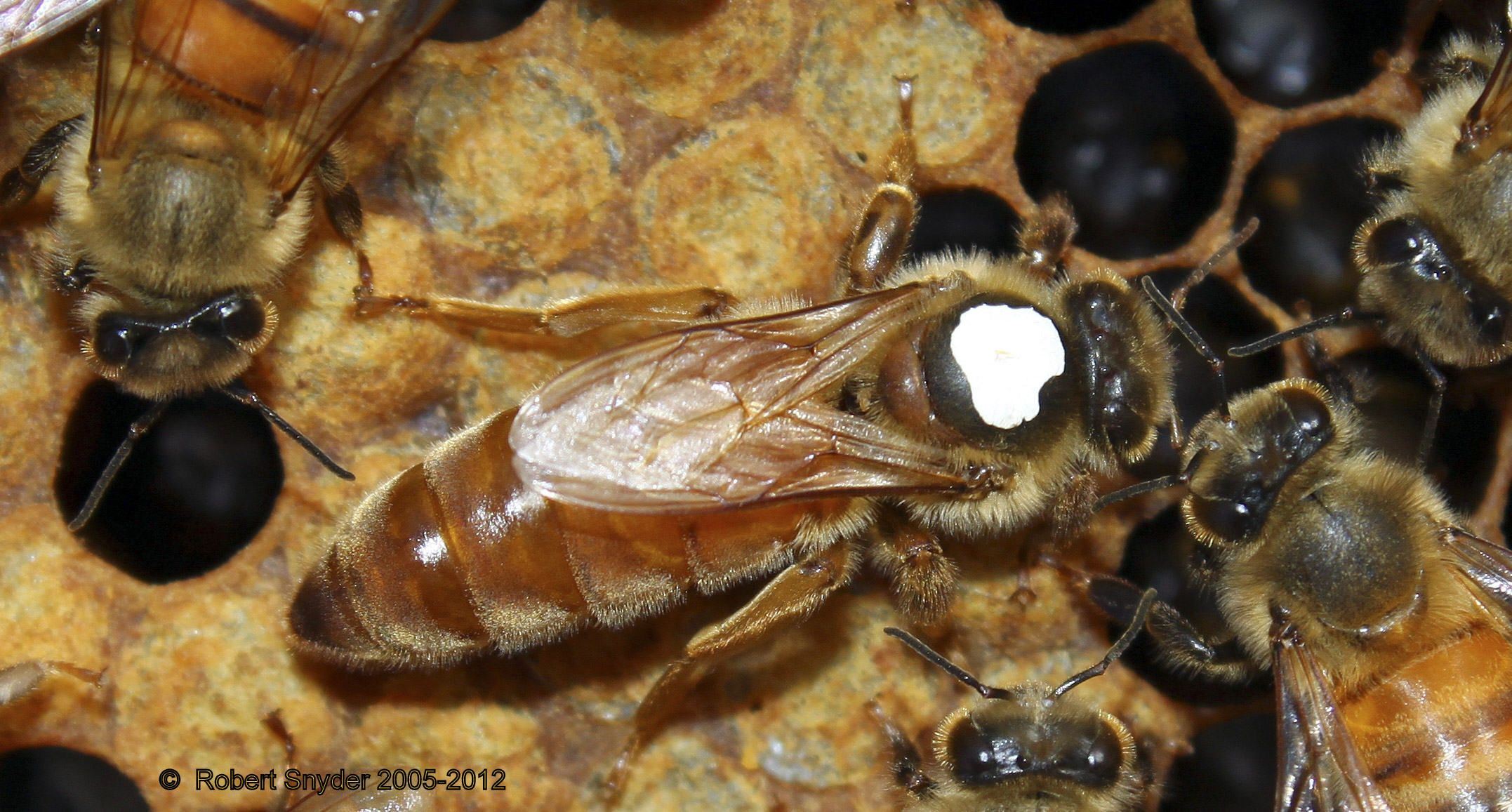Distinctive circular retinue behavior seen as ringing of queen by a dozen or so workers, some with active antennal or mouthpart contact with the queen when she is not actively moving within the brood nest area.
Worker bees confined with a queen in a cage are also called attendants.
Queens need constant care by worker attendant bees (also known as a “queen retinue”). Highly attractive queens may have a dozen or more attendants, while less attractive queens may have five or fewer attendants. A lower number of attendants can be an indicator of an unhealthy or failing queen.
Attendants gather to care for their queen when queens “rest” after an egg-laying episode. The attendants walk over and touch queens with their antennaeantenna:
paired, slender, and jointed segmented appendages on the bee head; primary taste, touch and smell receptors. Antennation refers to how bees interact using their antennae to communicate various messages such as food exchange and distribution of queen pheromones.
and mouthparts, securing, in turn, the queen substance pheromonepheromone:
a chemical substance released externally by an individual (from an exocrine gland) which stimulates a response in a second individual of the same species
. Some attendants feed the queen, others groom the queen, and yet others remove queen feces. Virgin queens initially have few attendants.
It is possible to see workers seeking to injure queens, especially a caged queen. When such behavior is observed, the queen should remain in the cage for a longer period before release, otherwise the workers might seek to ball her (known as balling queen). Rarely, such as in swarm preparations, it might be possible to see queen attendants vibrating and roughly treating a queen.
A lack of attendants may signify a less attractive (failing) queen or virgin queen.
Queen attendants also refers to several (3–5) worker bees that are included with a caged queen intended for colony queen introduction; they are designed to care for the mated queen during shipment from a queen producer for sale to a beekeeper.
caged queen
queenrightqueenright:
a colony with a healthy, worker egg-laying queen; the opposite of a queenless colony colony condition
colony condition
Collison C. 2017. The Queen’s Court. Bee Culture. Accessed 2023. https://www.beeculture.com/a-closer-look-8/
Snyder R. 2012. Observing Retinue Behavior. BeeInformed. Accessed 2023. https://beeinformed.org/2012/07/13/observing-retinue-behavior/
“Caring for Caged Queens”. YouTube, uploaded by University of Guelph Honey Bee Research Centre, 20 March 2019, https://www.youtube.com/watch?v=E2aRpTkoDeM
Mangum W. 2020. Queen Introduction: Part 2, The Effect of Attendant Bees. Bee Culture 160(7).